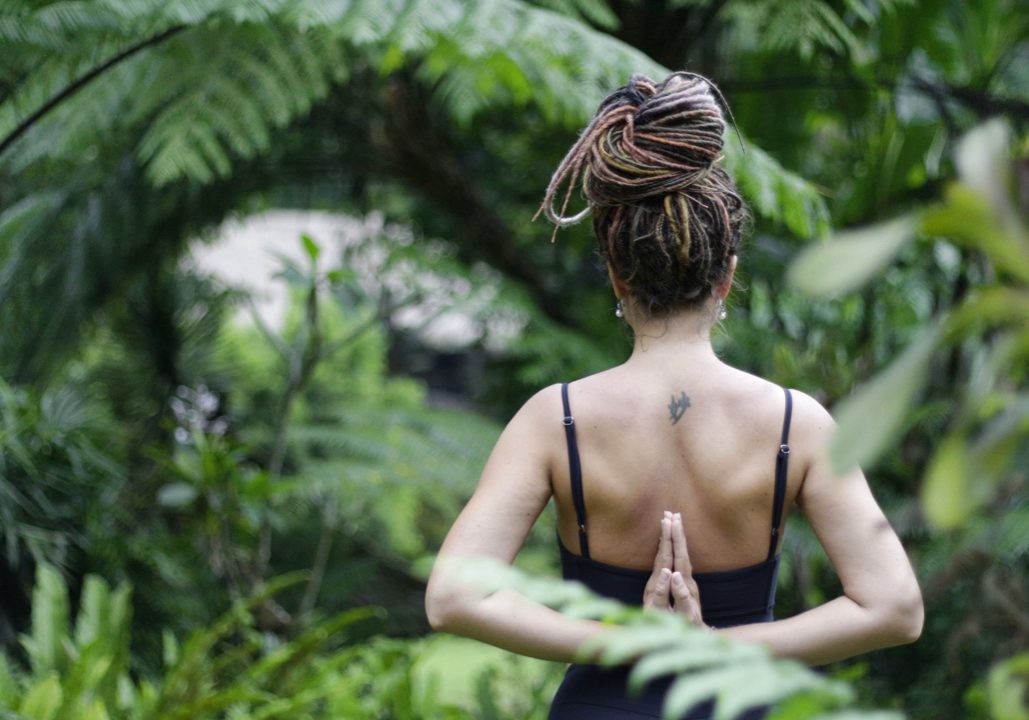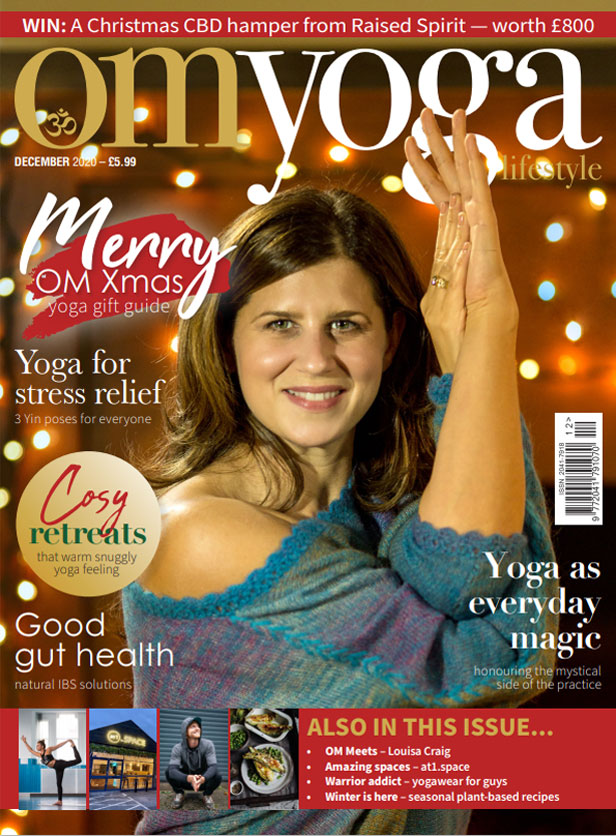
Yin Yoga: a game changer
How Yin Yoga can transform our yoga practice as we age. By Megan Wadsworth
My yoga practice was at a standstill until I stopped competing with my younger self — that was when I found Yin Yoga.
My first experience with Yin Yoga was at a weekend retreat. I had recently started my yoga practice again after an extended hiatus. With just me and my mat I quickly became discouraged as the realisation hit that in my mid-forties I could no longer do what my 20-something self could.
Eventually, I signed up for a weekend retreat thinking I’d push myself into shape and get back on the path to backbends, headstands and perfectly flat forward folds. What ended up happening was very different.
Our yoga instructor was 51-year-old Brigitte Riley from Bedfordshire with 16 years of teaching experience behind her. She mentioned some issues she has had as she has aged and encouraged us to listen to those pains and work accordingly. I was in good hands.
After a couple of active or flow-based classes on the Friday evening and Saturday morning, we were told to return to our mats that evening for something special and to bring warm clothing for layering. I assumed we’d be meditating and wasn’t particularly looking forward it.
When I arrived the lights were dimmed and our mats set up with blocks, bolsters and blankets. The next two hours can only be described as absolute bliss.
The class consisted of holding poses and stretches for an average of five minutes. We were given recovery or restorative poses in between in order to be still and notice the changes in our body as they were happening.
I was hardly moving but my body was doing more to improve itself than it had in the months I had spent forcing myself to carry on with a practice that no longer worked for me. Yin was a game changer.
Yin Yoga for ageing bodies
Yin Yoga was developed by long-time yoga teacher Paul Grilley. He used traditional Chinese medicine to create a practice which focuses on the meridians throughout the body. In Chinese philosophy, the word ‘yin’ is used to describe cool and calm. It’s focused and slow moving as opposed to ‘yang’ which is all about generating heat and moving fast.
As we age, our bodies become stiffer and we lose mobility. In our youth we needed some yin to counteract the yang, like stretching after a run, but as time goes on we need more of this.
Bertie Clarke, a well-respected Yin Yoga instructor based in Canada, says that we can be strong for a long time but the main health issues we face as we age are due to stagnation as our joints become compressed and our ligaments shrink.
Yin Yoga allows more time in the stretch than a typical flow yoga class does. Being fit becomes about mobility as much as it does strength or vanity. These are important too but impossible to achieve if you can’t first move properly.
In fact, you risk making the situation worse as the fascia around the muscle will tighten causing a lot of discomfort. This is exactly what was happening to me. The more I exercised the worse I seemed to feel. Freedom for your fascia Fascia is the connective tissue around your muscles which tightens with age. In the book Lilias! Yoga Gets Better with Age, Lilias Folan describes it as clingfilm or shrink wrap that surrounds every muscle, gland and organ.
The more it clings, the worse it feels and unfortunately it takes a long time to heal. I tend to picture a bowl in the microwave covered in cling film. The hotter it gets the tighter it becomes. When cling film is loosened and the steam is let out, the cling film becomes slack and malleable. Your breath during a yin practice acts as the released steam and the fascia relaxes with your breath. There is a lot more to it than that but this is a good starting point.
One of the best things about Yin Yoga is that it is for everyone. There are no beginners or advanced, only modifications to help you into your best version of the pose where you feel the best stretch. This differs greatly for everyone.
Yin Yoga is simple and accessible for all ages and body types but that is not to say it is always easy. The poses can be uncomfortable and an acceptance of this is necessary. It requires a quieting of the mind which can be challenging in the busy techno world we live in.
In the quiet space we slowly move into the stretch deeper and deeper and this can often trigger bottled up emotions. It’s not uncommon to shed a few tears during a practice. The main thing you need to bring to this is a willingness to relax into the discomfort. The more you relax, the more you are working the connective tissue or fascia and gaining mobility in your joints.
The freedom you feel in your body after a session paves the way to your choice of any yang-based exercise, be it a more vigorous yoga or any other high-energy exercise, safely and effectively.
A meditative mind-body practice
Yin Yoga is a meditative practice which has enormous mental health benefits as well as physical. Every pose requires mindfulness so you are getting a healthy dose of meditation as well as physically healing yourself. The mind-body connection in Yin is powerful and leaves you feeling you can take on the day with energy and focus.
There are different ways you can go about starting your practice. Brigitte Riley suggests that a full Yin practice be done twice a week. Or it can be incorporated into your normal practice.
Caroline Layzell, in her article ‘9 Reasons to Practice Yin Yoga’ frees up the constraints completely and encourages you to grab your moment when you can. She suggests holding poses at your desk, watching TV or even lying in bed. The most important thing is to listen to yourself and find your own way.
As deep as the poses are, it is also deeply personal. Let your body lead the way. As for me, I’m settling into a full Yin practice twice a week. That hour or so on my mat feels like the best gift I could give myself. It’s my go-to option for self-care. However, I also find I am unable to dive right in to energetic exercises upon waking and have naturally begun warming up with a little Yin at first.
Since introducing Yin Yoga into my life, I have stopped competing with my younger self and gained an appreciation of where I am now. By slowing down I have not only started to regain mobility but I have upped my fitness levels and my clothes are starting to look good on me again.
I’ve been doing the exact opposite of what I have done in the past and I feel amazing for it. This doesn’t mean I am no longer interested in getting up into a headstand again, it just means I’m no longer in any rush.




